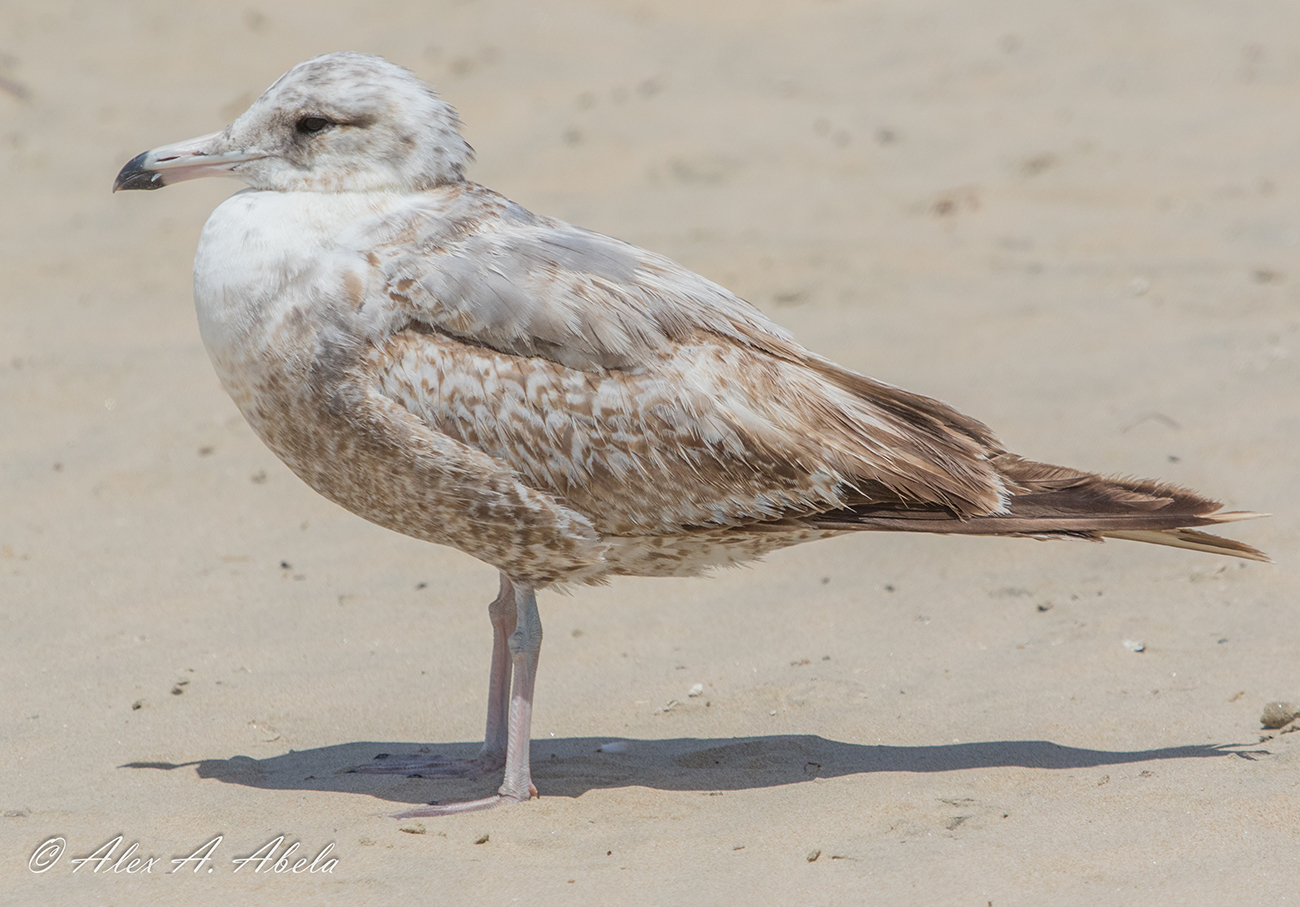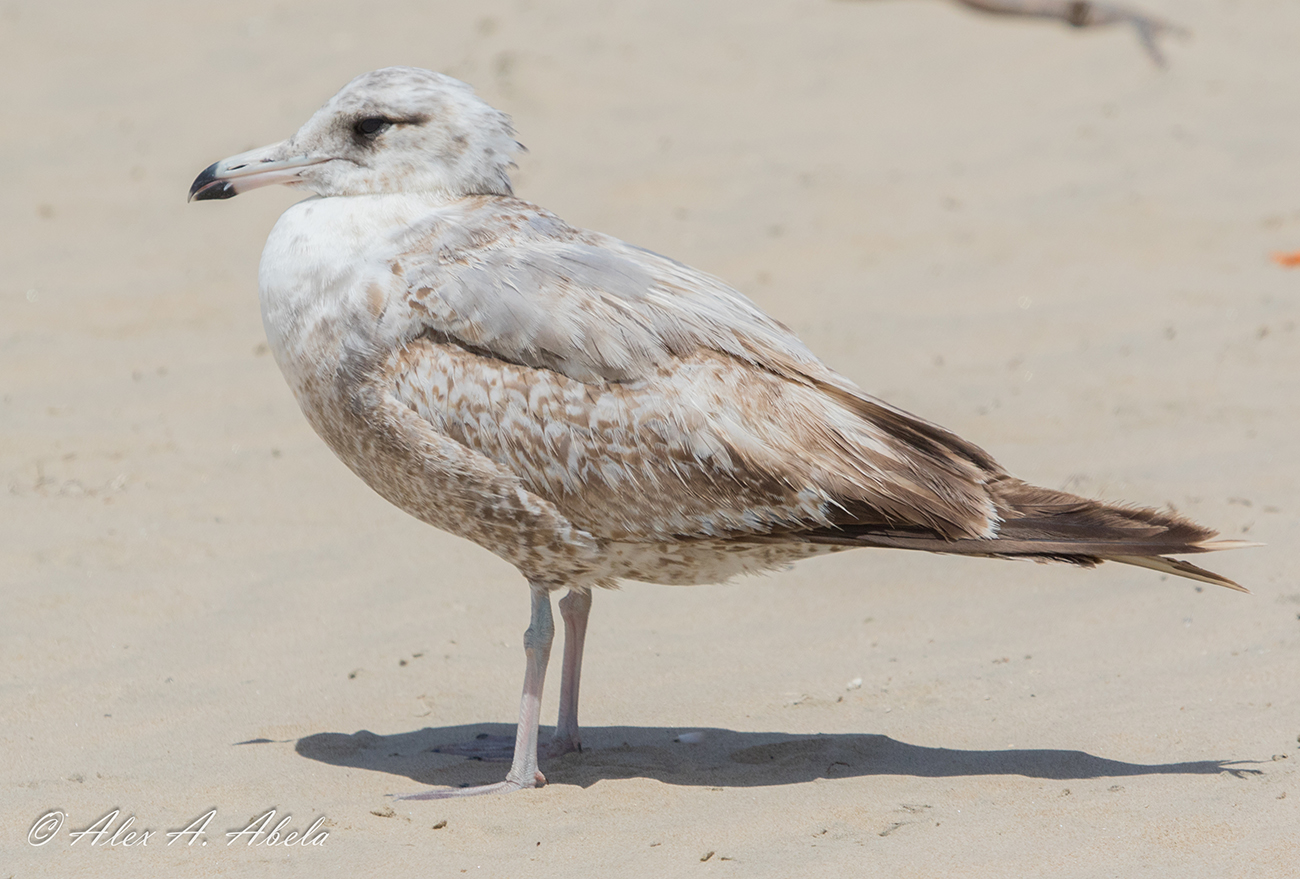Coordinators:
Alex Abela
John Cant
Mars Muusse
Index ORG
ring projects
PDF's
1cy June
1cy July
1cy Aug
1cy Sept
1cy Oct
1cy Nov
1cy Dec
2cy Jan
2cy Feb
2cy March
2cy April
2cy May
2cy June
2cy July
2cy Aug
2cy Sept
2cy Oct
2cy Nov
2cy Dec
3cy Jan
3cy Feb
3cy March
3cy April
3cy May
3cy June
3cy July
3cy Aug
3cy Sept
3cy Oct
3cy Nov
3cy Dec
4cy / sub-ad Jan
4cy / sub-ad Feb
4cy / sub-ad March
4cy / sub-ad April
4cy / sub-ad May
4cy / sub-ad June
4cy / sub-ad July
4cy / sub-ad Aug
4cy / sub-ad Sept
4cy / sub-ad Oct
4cy / sub-ad Nov
4cy / sub-ad Dec
adult Jan
adult Feb
adult March
adult April
adult May
adult June
adult July
adult Aug
adult Sept
adult Oct
adult Nov
adult Dec |
California Gull californicus 1st cycle (2CY), May 20 2018, Pismo beach, California, USA. Picture: Alex Abela.
See Alex's Flickr site for many more images, illustrating the plumage development in this species.
Living under sunny and marine conditions, the juvenile plumage is ragged and abraded in spring.
Quite commonly, CAGU molt some wing-coverts and/or upper tertials in the post-juvenile molt. They grow these feathers in autumn. By spring, even these replaced coverts may be very worn as well, despite of being one generation later.
By May, birds may start PB2 molt, which is a complete molt taking the whole of summer to replace all feathers, including the large flight feathers. This PB2 molt commences by dropping P1, after which several molt waves progress throughout the feather tracts in the wings in the next couple of months:
- a linear wave from P1 to P10 in the primaries (P10 fully grown as late as by October);
- two molt waves in the secondaries, both starting at the outermost feathers and progessing inwards to meet close to midway (S1 dropped when P6 is growing, to prevent large molt gaps in the wings);
- a transfugal molt in the rectrices, replacing the central tail-feathers first, then working its way outwards to both sides (R1 dropped at about the same time as S1; commonly R5 the last to be replaced);
-
two molt waves in each of the wing-covert row (GC, MC, LLC), starting the outermost and innermost feathers and progessing inwards to meet close to midway;
- a quite random molt in the Lesser Coverts (LC).
In the very early stage of PB2 molt, when P1 is dropped, this is often far from obvious in resting birds. Still, it is an important moment, as technically speaking birds enter their "2nd cycle" now. In the field it takes a little time to witness the PB2 process going on in any particuar resting bird. Easiest check is on missingcoverts or new inner wing-coverts and the upper tertial. PB2 molt is in progress when very fresh wing-coverts start to appear, easily distinguished from the worn adjacent feathers. Especially in taxa like CAGU, fresh wing-coverts in early summer stand out, as post-juvenile wing-covert molt was finished by autumn and halted throughout winter and early-spring. Therefore, in May, both old juvenile and replaced 2nd generation wing-coverts are far from fresh feathers.


|
 California Gull californicus
California Gull californicus
